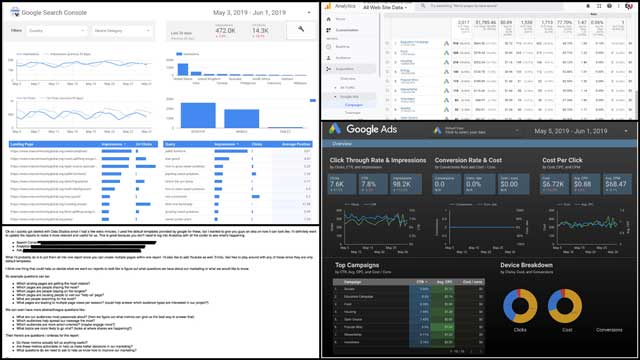Effective Video Marketing Strategies for Success.
Video marketing, an innovative and powerful approach to digital marketing, has emerged as an essential tool for businesses seeking to capture the attention of their target audience. In an era characterized by increasingly online and visually oriented consumers, using video as part of a comprehensive marketing strategy has become more important than ever. This discussion provides a comprehensive overview of the mechanics and utility of video marketing, from inception to execution and analysis. An exploration of goal-setting, content creation and distribution, search engine optimization, and results analysis all come together to empower businesses or individuals with the keys to unlocking the full potential of video marketing.
Understanding Video Marketing
Understanding Video Marketing
Video marketing refers to the use of videos to promote and market your product or service, increase engagement on your digital and social channels, educate your consumers and customers, and reach your audience with a new medium. This method is strategically designed to promote goods, services, or branding towards a certain audience in the digital world.
Video Marketing in Today’s Digital Age
In today’s digital age, with the growth in technology and changes in consumer behavior, video marketing has become more than just an option; for many businesses, it is an essential strategy. People, in general, are consuming more video content than ever before, whether on YouTube, Facebook, Instagram, or on company websites. The impact of video content is quick to catch users’ attention and leave a strong impression, faster than reading through black and white texts.
The Relevance and Importance of Video Marketing
Video marketing carries significant relevance and importance in today’s business environment. A well-produced video can present a concept or product in a straightforward and understandable way. Beyond merely introducing a product or service, video marketing increases engagement, boosts search engine rankings, and expands the company’s reach. Video marketing engages consumers in a way that text and images don’t, making complex details more digestible and catering to those who prefer audio-visual information over text.
Video Marketing Statistics
According to Insivia, viewers retain 95% of a message when they watch it in a video compared to 10% when reading it in text. Moreover, a study by Wyzowl states that 86% of businesses use video as a marketing tool. This is a significant increase compared to just 63% in 2017. These figures indicate an undeniable rise and reception of video marketing in businesses’ promotional strategies.
Leveraging Video Marketing Strategies
Businesses can leverage video marketing in numerous ways. Product demonstrations, customer testimonials, live events, how-to videos, explainer videos, and behind-the-scenes clips are examples of content that can be converted into video form. By integrating video marketing into their marketing strategies, businesses can reach a wider audience, connect with consumers, and foster brand transparency.
Benefits of Video Marketing
Studies have shown that video marketing can increase direct sales. Websites that have videos can capitalize on the user staying on the site for a longer period, thus having a better chance of turning them into customers or clients. In addition, videos increase shareability which then increases the chances of a business’ message reaching more people. It’s not uncommon for a good video to go viral, potentially making a business a household subject overnight.
Understanding Your Audience
One key aspect of successful video marketing is understanding your audience: what do they want to see and learn about your product or services? Once you understand your target demographics’ preferences, you can create videos that meet their needs and preferences, thereby increasing engagement and conversion rates.
Understanding the Power of Video Marketing
Video marketing serves as a potent tool in the modern promotional ecosystem due to its multifaceted ability to engage audiences. By stimulating various sensory responses, leaving memorable impressions, and providing education alongside entertainment, video marketing captures attention like no other medium. This is why companies, both the emerging and the established, are progressively focusing their marketing strategies on crafting captivating video content.

Establishing Goals for Video Marketing
Setting Constructive and Attainable Objectives
Having tangible, realistic objectives forms the backbone of any thriving video marketing approach. Setting these goals should not only serve as the inception point for your marketing strategy but also as navigational aids for your planning and decision-making processes. More so, it simplifies the task of tracking and examining the progression and success of your strategy over its lifespan.
Aligning Marketing Objectives with Business Goals
Having clear marketing goals that align with your broader business goals is essential. When your video marketing objectives support your company’s overall mission and purpose, it creates synergy and ensures a strong, cohesive brand message. For instance, if your business goal is to enhance customer service, an aligned marketing objective could be creating explainer or how-to videos to mitigate customer queries and provide practical solutions.
Different Objective Types – Increased Web Traffic
One possible objective for your video marketing campaign could be to increase web traffic. Video content can be highly effective in directing viewers to your website. Including a clear call-to-action in your videos urging viewers to visit your website, or linking your site in the video description, can significantly boost your web traffic. SEO-optimized video content can also help your website rank higher in search engine results, drawing more organic traffic to your site.
Lead Generation
Another objective you may consider is lead generation. Videos can be an efficient channel for generating leads, especially when they engage viewers and offer value. By capturing your audience’s attention and sparking their interest, videos can set the framework for conversions. A specialized landing page, coupled with a compelling video and a strong call-to-action, can encourage viewers to share contact information, effectively generating new leads.
Brand Awareness
Achieving greater brand awareness is often a key objective for businesses, and video marketing can support this goal effectively. Sharing videos across multiple platforms, including your website, social media, and email newsletters, can put your brand front and center for millions of viewers. Creating brand-focused, high-quality videos that convey your brand’s values, story, and persona can resonate deeply with viewers, making your brand memorable.
Setting clear, realistic, and succinct goals is the cornerstone of any successful video marketing campaign. They provide direction and purpose, and furthermore, should align closely with your broader business objectives in order to make any significant impact.

Planning and Creating Effective Video Content
Master the Art of Utilizing Different Video Types for Marketing
There’s a broad spectrum of video types available, each serving different marketing objectives. From how-to guides and demo videos to heart-touching testimonials, every type of video resonates with a different subset of your audience and at different stages in their customer journey. Knowing when and how to leverage each type is essential in making your video marketing strategy effective.
How-to Videos
A “how-to” video serves to educate viewers on how to use a product or service. It is detailed, instructional, and often utilizes simple language to cater to beginners or non-experts. For instance, software companies often generate how-to videos to help users understand the functionalities and capabilities of their products.
Demo Videos
A “demo” video showcases the functionality and value of a product or service. This involves showing off its features and benefits, usually as they would appear in a typical setting. For example, tech companies often use demo videos to demonstrate how a smartphone or laptop works.
Testimonial Videos
A “testimonial” video features happy, satisfied customers talking about their experiences with a company’s product or service. These videos are authentic, personable, and trustworthy. They build validity around a company and leverage social proof to convert skeptical viewers into customers.
Creating Compelling, Engaging Content
To successful video marketing, creating compelling, engaging content is crucial. This requires precise planning and performance at various stages. At the planning stage, it’s important to have a thorough understanding of your audience and what appeals to them. Using this understanding, create content that resonates with them emotionally, appeals to their curiosity, and triggers their desire.
Leverage storytelling as a mighty tool to captivate audiences. A good story makes an emotional connection with viewers, making them more inclined to watch the entire video and take the desired action, like purchasing or subscribing.
Lastly, never undermine the importance of a good script. It lays the foundation for your video and drives its success. A well-crafted script succinctly conveys your message and signifies a clear call-to-action, ultimately achieving your marketing objectives.
Strategies for Visual Storytelling
Visual storytelling is a vital strategy in video marketing. It’s all about relaying a story through visuals, triggering viewers’ emotions, and facilitating them to connect with the product or brand. To do this effectively, consider using visual metaphors, symbolism, and imagery that resonate with your audience. Ensure your visual elements have continuity and coherence, creating a seamless viewing experience. Incorporate a variety of shots, angles, movements, and compositions to maintain visual interest and provoke emotional responses.
Mastering Scriptwriting and Production
The foundation of any successful video marketing strategy is a well-crafted script. This document should not only lay out your video’s purpose but also identify your target audience, explain the storyline, and underscore the central messages. It’s vital to keep your language straightforward, engaging, and accessible. Be sure to spotlight what makes your product or service exceptional and finish with a strong call-to-action.
On the production front, meticulous planning is essential. Outline your budget, create a timeline, identify necessary equipment, and finalize shooting locations in advance. Additionally, pay attention to post-production components such as editing, including appropriate soundtracks, and introducing graphics or special effects. These combined elements result in a thoughtfully constructed and professionally made video, enhancing its potential to resonate with your audience and meet your marketing goals.

Video SEO and Distribution
Unpacking Video SEO and Its Importance
In the realm of video marketing, understanding and effectively leveraging Video Search Engine Optimization (SEO) cannot be overstated. Video SEO increases a video’s visibility on search engines like Google and video-sharing platforms like YouTube. It involves refining your video’s metadata— information about your video. This includes elements such as title, description, tags, categories, and subtitles or captions, all aimed at boosting your video’s position in search results.
Incorporating relevant keywords within the video title, tags, and description enables search engines to interpret your video content better. This, in turn, makes your video increasingly likely to appear in searches relevant to your chosen keywords. Consequently, properly optimized videos have the power to steer more traffic towards your website, boost brand visibility, and elevate conversion rates.
For optimally effective keywords, tools like Google Keyword Planner are invaluable. These can assist in identifying popular keywords that align with your video content.
Optimizing Video Content with Captions and Descriptions
Implementing captions in your videos not only benefits viewers who may be watching in silent or noisy situations but also boosts video SEO. Search engines can’t ‘read’ video; they rely on text-based data to understand your video content. This is where captions, which are textual versions of the dialogue in your video, play an essential role. Captions provide more context and relevance, enabling search engines to gather more information about your video content.
Equally, video descriptions offer an opportunity to include more information about your video, including vital keywords. More detailed descriptions enrich your video SEO, allowing search engines to crawl and rank your content higher in search results.
Effective Video Distribution Strategies
Effective video distribution begins with identifying your target audience and understanding where they spend most of their time online. Videos may be distributed across various channels, including social media platforms, video hosting sites, and emails.
Publishing your video on a platform like YouTube, the second largest search engine after Google, gives it the potential to reach billions of users globally. Promoting your video on social media networks like Facebook, Instagram, and LinkedIn can also help increase viewership as these platforms have integrated features for sharing and promoting video content.
If you have a following or mailing list, including videos in your emails can significantly enhance your engagement rates. Research has shown that adding videos to emails can boost click-through rates by as much as 300%.
To maximize reach and ensure your video gets viewed by your target audience, consider using paid promotions. Sponsored posts or ads can place your video in front of your desired audience, going beyond organic reach.
Remember, consistency is key in video distribution. Regularly posting video content keeps your brand fresh in your audience’s memory and improves your chances of drawing in a loyal following.
Measuring Video Performance
Understanding the performance of your video content plays a significant role in finetuning your video marketing strategy. Monitoring key metrics such as view count, viewer retention rate, viewer engagement, and conversion rate, presents valuable data to guide the trajectory of your strategy. By closely observing these parameters, you can identify what resonates with your audience and which areas require improvement, therefore, optimizing the impact and effectiveness of your video marketing initiatives.

Measuring and Analyzing Video Marketing Success
Tracking and Deciphering the Outcome of Video Marketing Campaigns
The cornerstone of successful video marketing strategies often lies within vigilant tracking and analysis of your campaign’s performance. This equates to meticulously following various metrics and unpacking their significance in terms of marketing success. Crucial metrics to consider include view count, how often your video is shared, and the number of comments each video amasses.
View Count
The view count of your video is a fundamental metric that provides valuable insights into the reach of your videos. High view counts typically signify that your video content is attracting a broad audience. A rising view count is a sign that your video’s messaging is resonating with viewers, and they’re sharing it within their networks, helping to extend its reach.
Share Count
Share count is another metric that measures the virality of your video content. When viewers share your video, it indicates that they found your content informative, entertaining, or compelling enough to share with their network. High share counts reflect your video’s ability to engage viewers and encourage them to act – an essential characteristic of successful video marketing.
Comments
Comments are a direct measure of your audience’s engagement with your video content. They provide qualitative insights into what viewers think about your content, offering a space where viewers can ask questions, make suggestions, or share thoughts. Analyzing comments can help you understand what elements of your video content viewers connect with, fostering an opportunity for businesses to establish a deeper, more personal relationship with their audience.
Translating Metrics to Marketing Success
While these raw data numbers are crucial, understanding their role in marketing success is even more critical. For example, a high view count teamed with a high share count is a strong indication that your video’s messaging is successful and resonating with viewers. Meanwhile, numerous comments show that your audience is highly engaged, fostering an interactive relationship.
Using Data to Refine Future Campaigns
By gathering, tracking, and analyzing these metrics, you can glean insights into what works best for your target audience, informing the development and refinement of future marketing campaigns. It’s important to see metrics not just as static numbers but as dynamic insights that guide future strategies.
For instance, if a video has a high view count but a low share count, it may indicate that whilst the video is viewed a lot, it may not be compelling enough to prompt viewers to share it with their network. Similarly, a high number of negative comments might indicate that the video content is not resonating well with the audience.
The ultimate goal of video marketing isn’t just about creating a one-off video that scores high views or shares. Instead, it’s about leveraging the power of video to build a consistent and compelling brand narrative. By closely monitoring and analyzing your video marketing metrics, you can continually refine your video marketing strategy, ensuring it remains effective and achieves your marketing goals.

Photo by lukechesser on Unsplash
Utilizing video marketing effectively requires a detailed understanding of not just content creation, but also proper distribution, optimization for search engines, and result analysis. The power to create engaging video content that resonates with audience and ensures business growth is undoubtedly a valuable asset. The complexities and intricacies of video marketing, underscored by correlating data analysis and marketing strategy improvisation, point to the dynamic and interesting future of this medium. As digital landscapes continue to evolve, harnessing the potential of video marketing will be pivotal for enterprises seeking to stay ahead in their markets.



